Montenegro white-water rafting: The journey up and down mountains was as hair-raising as the river.

(This is the second of a three-part blog about Montenegro.)
BRSTANOVICA, Montenegro – My rental car kept ascending with no end in sight. I couldn’t see the top. The mountain rounded way above me and the narrow, zigzagging road through a thick forest of pine trees was so dizzying I couldn’t tell if I was going north, south, east or west.
I was a bit concerned since my cellphone’s obviously 18th century GPS already sent me heading erroneously toward Dubrovnik. I couldn’t make another wrong turn if I wanted to make my white-water rafting trip.
After all, white-water rafting is why one comes to Montenegro. Not rafting in Montenegro is like not drinking wine in Italy. It is one reason why this tiny country the size of Puerto Rico in the middle of the Balkans has become one of the hottest travel spots in the world.

But if travel is as much about the journey as it is the destination, then Montenegro rafting is one of the top adventures in the old Eastern Europe.
Getting to the Tara River, which descends rapidly from the Bosnian border, is almost as challenging as the Class 4 and 5 rapids highlighting it every spring. Montenegro has an excellent, inexpensive bus system. However, in the north where Durmitor National Park spreads its gorgeous natural beauty, buses are non-existent.
No wonder. Lance Armstrong couldn’t negotiate its mountain roads.
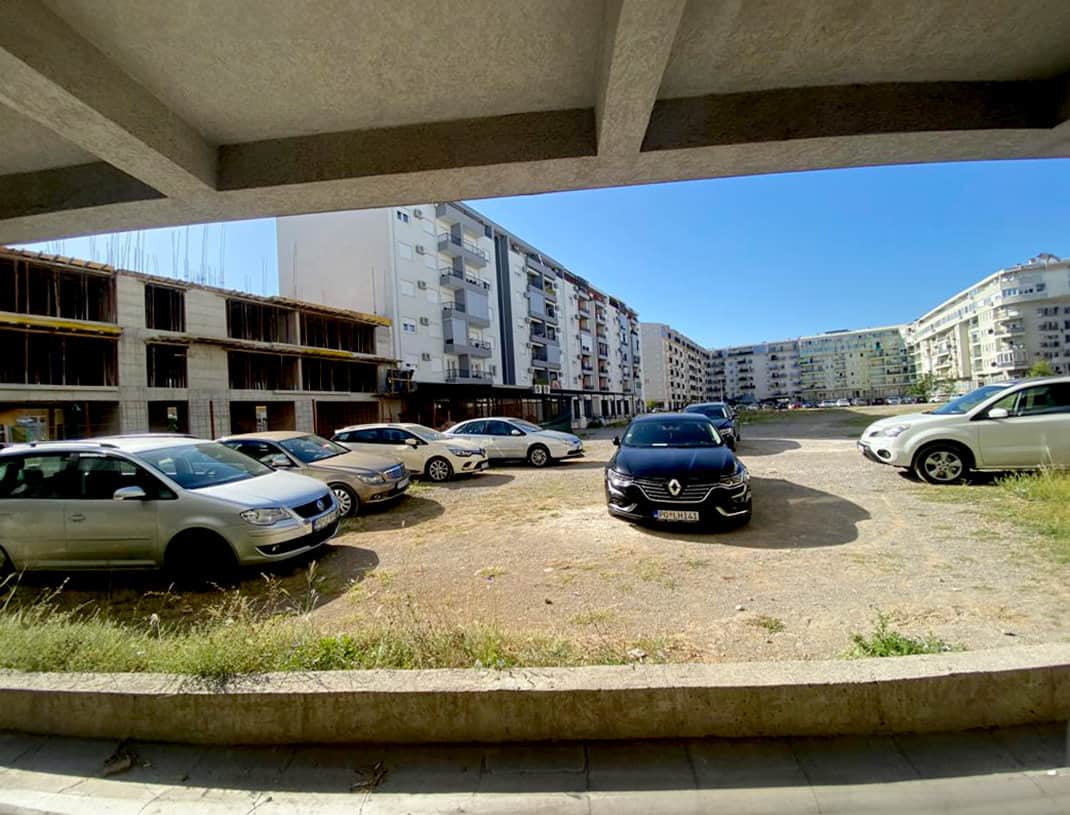
I try to avoid driving when I travel. I’d rather look at scenery than a GPS. But northern Montenegro makes it a requirement. I rented from a company in the capital of Podgorica called Planet Rent A Car. I found its tiny office in the back of a strip mall. It faced a huge, weed-covered lot surrounded by blockish, seven-story apartment buildings I thought I saw during my first trip here in 1978.
“Were these apartments built under Tito?” I asked the car rental manager.
“No. They were built in the last five years.”
OK, so Montenegrin architecture hasn’t caught up with its tourism. The car was terrific except for the air-conditioner which wasn’t really needed. In the 70 miles (120 kilometers) from Podgorica north to Durmitor National Park I went from the low 80s to the mid-60s in two hours.
This country has more variety than HBO.

The gateway to Montenegro rafting is Zabljak, a pretty ski town of about 2,000 people. A-frame buildings line the quiet main drag and bakeries sell hot pastries out of the oven before everyone’s adventures.
When I arrived, the tall, friendly manager of Zabljak City Center Apartments immediately handed me an ice-cold can of Niksicko, Montenegro’s national beer of which I soon developed a mild dependancy.
With an afternoon to kill before my rafting the next day, I took a 45-minute walk along the highway and through a forest to Black Lake. It’s a beautiful, nearly turquoise lake with the backdrop of craggy mountains and high forests. Villagers sat at wooden, roadside stands selling a wide variety of rakija, the Montenegrin whisky that also doubles as paint remover.

People sunbathed, walked along the shore, chatted on numerous park benches. The sun sparkled off the sky blue water, still warm from Europe’s record-setting summer.
That night at Restaurant Or’O, a high-ceiling, elegant spot that looked right out of Aspen, I dined on lamb goulash: big, thick, juicy chunks of lamb in a rich sauce with baked potatoes. I told the waiter it was as good as I’d heard.
“I know,” he said and rushed off.
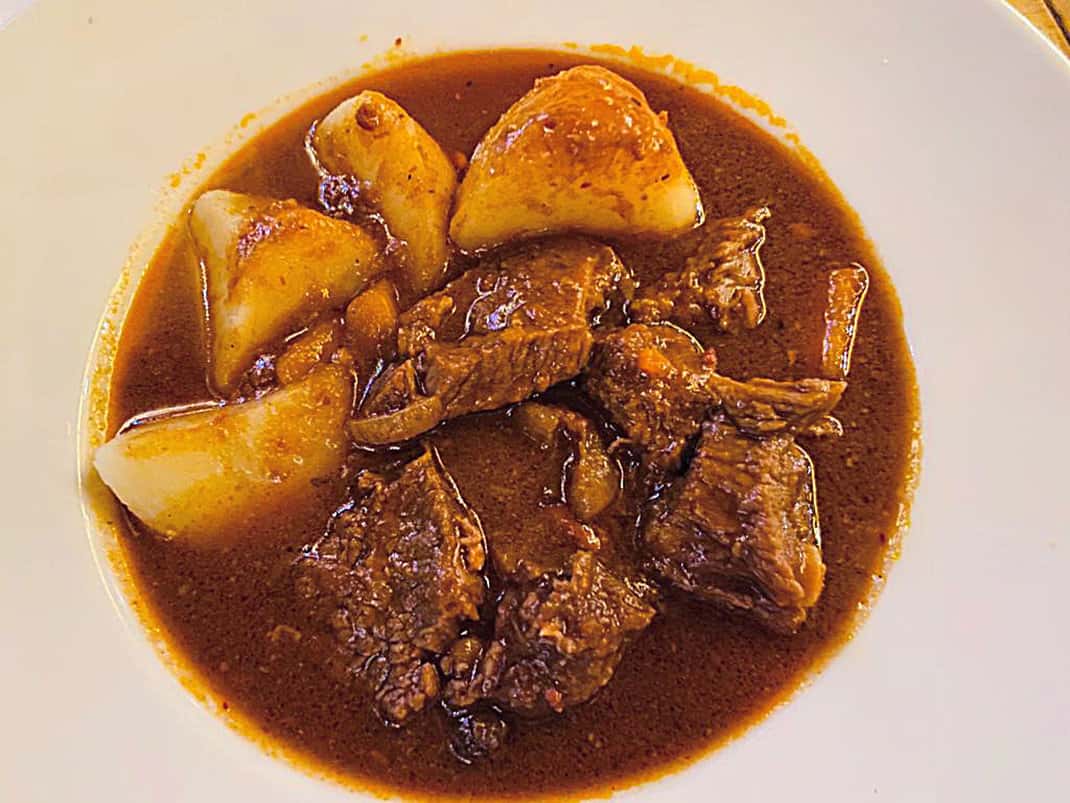
To the river
As a bird flies, it’s only about 20 miles from Zabljak north to Brstanovica, where a conglomeration of rafting companies set up camp near the Bosnian border. But because of the mountainous terrain, I had to first drive south, then west and then north before starting my ascent and descent to the river.
It takes two hours from Zabljak. I gave myself three hours. Turns out, I needed every minute. As I headed north, I mistakenly found myself admiring the remarkable mountain scenery that climbed to the heavens on my right. When I finally glanced down at the GPS balancing precariously between my legs, I noticed I had driven far off the “prescribed route.” I was heading west.
If I kept going I’d wind up in the Adriatic.
Rifling through my entire vocabulary in Romanaccio, the Roman dialect dedicated to profanity, I turned around and headed back toward Zabljak. I had no idea where I had to go and with my GPS no more useful than a 1965 map of the Iron Curtain, I began to panic. I was still two hours away. I had to reach the river in two hours.
Going pre-internet old school, I found a fireman washing down the firehouse and yelled out the window, “HEY, WHERE THE HELL IS BOSNIA?”
He pointed to where I had come. I was actually going in the right direction. My GPS acted as if it had been cleaned all morning with rakija. I turned around and broke whatever speed limit the country never posted.
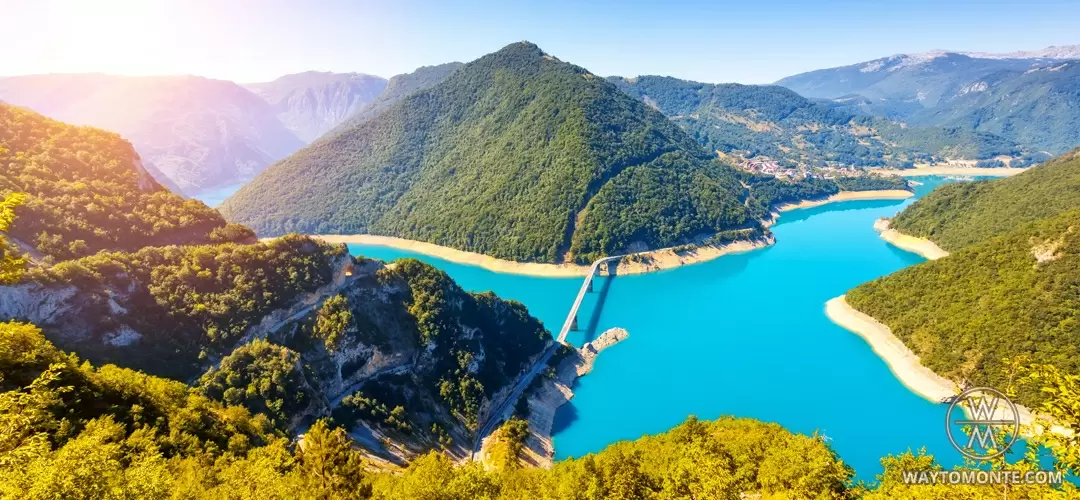
My zigzagging through the trees eventually put me above the treeline. I looked out at a dizzying string of limestone mountains speckled with trees. When I descended, my ears popped and I settled into a long two-lane road that introduced me to the scenery I read about would blow me away.
In front of me was Lake Piva, arguably the most beautiful lake I’ve ever seen. It wasn’t just the surrounding tree-covered mountains. It was the color. Turquoise. I’d never before seen a turquoise lake. I’d seen similar color only in the South Pacific. I started looking around for palm trees. I listened for Polynesian music.
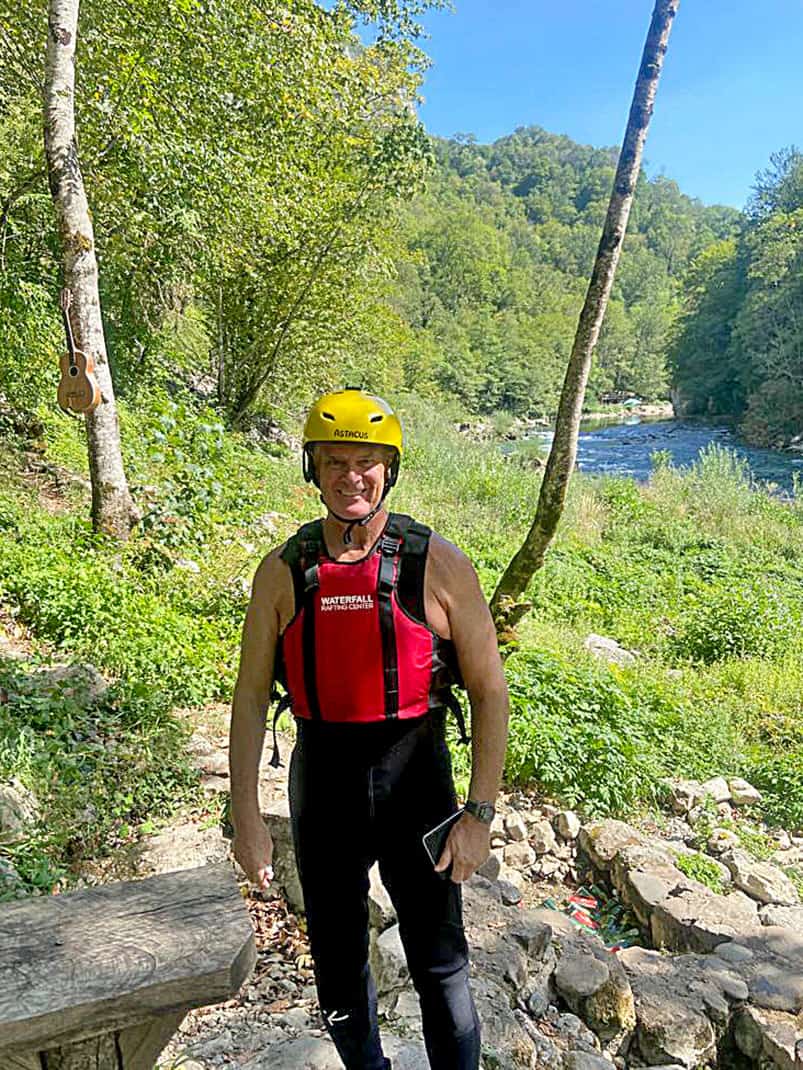
Montenegro rafting
Mesmerized, as if I’d fallen into watercolor painting, I cruised along the lake until I reentered the forest and found the narrow turnoff for the rafting. Waterfall Rafting Company is one of about 30 companies that runs boats in Montenegro.
It has a long wooden building that doubles as an office and dining room next to a series of small cabins for overnight stays. About 20 of us gathered around a few grizzly guides who gave us safety instructions and outfitted us with wetsuit farmer johns, booties, life preserver, helmet and paddle.
I’d done my share of white-water rafting living in Colorado for 23 years. I’d also rafted the Deschutes River in Oregon and the Shotover in New Zealand.

The setting in Montenegro was spectacular. The Tara River wasn’t the turquoise of Lake Piva but was bluer than any river I’d rafted. All the water comes down from the surrounding mountains which are covered in snow in winter.
Piloting our boat was Sergio Vidojevic, a burly, bearded 45-year-old Serbian living in Bosnia who commutes across the river every day for work.
“You can drink the river here,” Sergio said. “Go ahead. Try it.”
I dipped my hand. It was good. It was also cold. Really cold. Sergio said the water is 10 degrees celsius (50 Fahrenheit). In the winter it’s 4 (39). Yes, this is fall, the off-season. The water is about 10 meters (33 feet) lower than in spring. Sergio pointed to a spot way up on the cliff.
With the river lower, Montenegro’s white-water rafting in fall is more of a leisurely cruise down a lazy river. It’s Class 2 rapids. In the spring, every day is Class 4 or 5. Sergio wore curious flower-print swimsuit and didn’t even wear a helmet with us. In the spring?
“Always,” he said. “If you see me wear a helmet, be worried.”
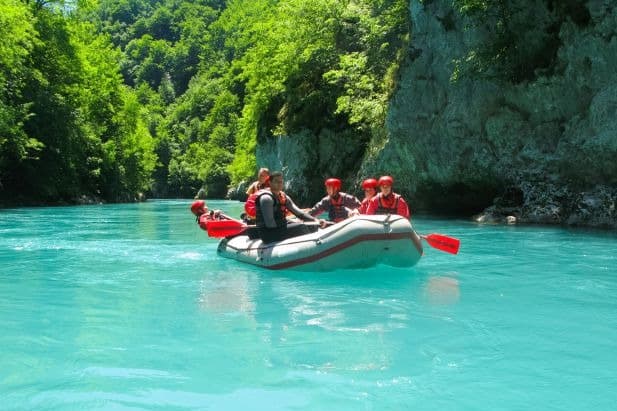
Sergio, has been a river guide for 20 years. He started 12 years after Yugoslavia split into five republics with Montenegro still part of governing Serbia. They’ve all been very successful transforming their economies through tourism. Rafting has been a driving force behind Montenegro’s rise over the last 20 years.
I asked if they did white-water rafting in the old Yugoslavia.
“They did but it was with wooden rafts,” he said. He wasn’t smiling.
The rafting covers about eight miles (14 kilometers). They consist of 20 rapids which were more like big bubbles of foam than anything hair raising. At regular intervals, Sergio would yell, “GO! GO! GO! GO! GO!” then “STOP!”
The lack of danger allowed us to marvel at the scenery around us. The river cuts through the Dinaric Alps which create Europe’s deepest canyon at 4,260 feet (1,300 meters). This section of Alps boasts 50 peaks at least 6,000 feet (1,830 meters) high.
While the deepest Tara Canyon is located northeast of Zabljak, our section of the river was no less lovely. The limestone cliffs reached for the sky on the Bosnian side of the river. Deep forests formed a background of emerald green. The blue river made me wish I could break out my cellphone camera, locked away in a waterproof bag.
In fall, the Tara has many calm spots where we could swim. Even in neoprene wetsuits the 50-degree water took my breath away as I slid off the back of the boat and completely submerged. I had to move my arms, not to swim but to get my blood circulating.
Sergio said some people die when the water is colder.
“People lose their breath, panic and run out of energy,” he said.
In the spring, Montenegro is home to some of the most challenging rafting in the world. Even Tara rafting guides admit “Every year someone dies.” Waterfall Rafting says they’ve never had a death. During a break, where we could buy cans of beer chilled in a pool of river water, a group of guides gathered.
From Serbia, Bosnia and Montenegro, they all spoke the same language and in any language they agreed that rafters must be careful what company they choose.
“Guides aren’t good enough,” Sergio said. “You need 5-10 years experience. Out of 300 guides, about 30 are experts.”
Another said, “Many rafters don’t paddle good. It’s hard to steer to avoid rocks. And they drink too much.”
However, Montenegro rafting is wildly popular. Sergio said some days in spring will see 500 rafts on the river.
We saw about seven, all floating down on a brilliant sunny day of about 70 degrees with no sound except the occasional gurgling rapid and a bird singing above. As the river slowed to a crawl near the end, Sergio broke out some rakija, the authentic stuff he bought from a Bosnian village, not the roadside souvenirs infused with sugar. He was right. The real rakija is much smoother, less biting. This time after drinking rakija, I didn’t gag.
After we all ate our delicious trout lunch, I sat down with Igor Radovic, the Waterfall manager. I asked him about the death rate on the river and what can be done. He does his part by paying the most for the best guides.
“Our skipper guides are really experienced because this river is not that easy to raft on because there are a lot of stones,” he said. “You have to be really careful. You have to follow the line of the water. When water is really high it can be really dangerous.”
I told him about the time I rafted in New Zealand. Some tourists had recently died after a company went out when the water was too high, conditions that forced other companies to close for the day. Later, all the rafting companies met and decided if one wouldn’t go out due to high water, none would.
I asked if the Montenegrin government would ever step in to regulate rafting for safety.
“I don’t think so,” he said. “They don’t put much attention to this kind of stuff that they should. As long as everybody’s happy, they’re not going to do anything.”

The drive home
My adventures, however, were not over. I still had to get back to Zabljak before dark. I noticed the windy mountain roads not only had no guardrails, they had no lights. I’m legally blind in my right eye. My lame GPS pinpointed my location somewhere in Albania.
As I left Lake Piva, I noticed a small hand-painted sign reading, “ZABLJAK” with an arrow. It looked like a hitchhiker wrote it. The arrow pointed into a black cave. I precariously steered inside and saw no light. Nothing. I steered around a stone wall praying another car with bad lights wouldn’t approach.

I emerged from the tunnel and found myself on the Panoramic Road. It’s essentially a “shortcut” to Zabljak. What it became was insight into true rural Montenegrin life. As my car ascended up the narrow windy road, I came across a village of curious pointy, grass-roofed houses. My car was stopped by a herd of cattle lazily crossing the road. I saw a tall man in a long tattered coat and floppy hat carrying a staff. He looked like a shepherd who had lost his flock.
Another road sign didn’t appear for an hour until I hit the main road leading to Zabljak. As I arrived at the guesthouse, Igor handed me a beer. I crashed my bundle of jittery nerves at an outdoor table.
Day Three: Welcome to Montenegro.
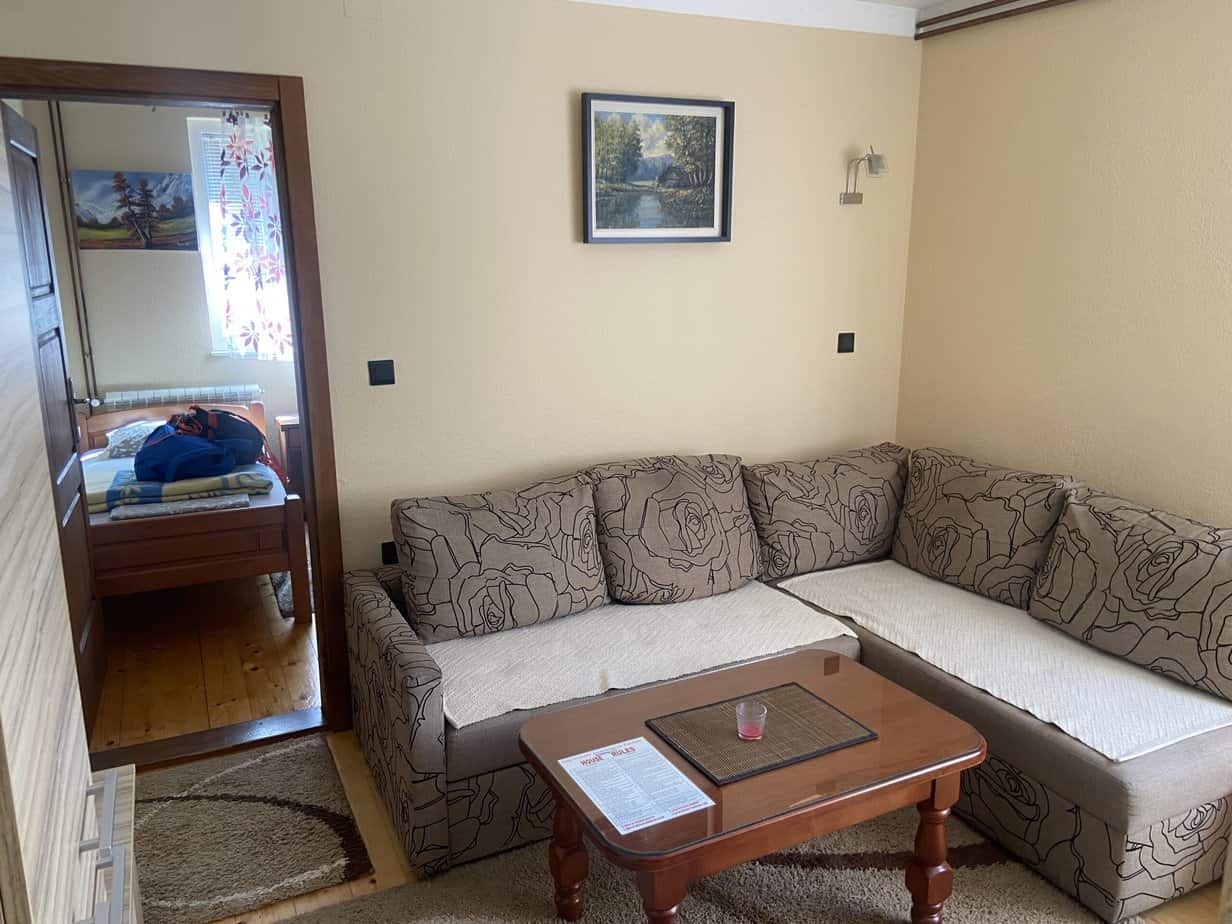
If you’re thinking of going …
How to get there: It’s best to rent a car. I used Planet Rent A Car, 146 Avda Mededovica, Podgorica, 382-69-810-805, https://planetrentacar.me/, 7 a.m.-10 p.m. I paid €100 for two days, including insurance. It’s about two hours to Zabljak and another two hours to Brstanovica where most of the rafting companies are based.
Where to rent: Waterfall Rafting Company, https://www.raftingmontenegro.com/, 382-69-310-348. Operates from April through September. I paid €65 including lunch.
Ljubo Rafting, 382-69-118-551. Operates boats in the deepest Tara Canyon and closer to Zabljak. Offers shuttle service from hotel if you want to take bus from Podgorica to Zabljak. The 2 ½-hour bus journey from Podgorica to Zabljak starts at €10.
When to go: April-May is Class 4-5 rapids (on scale of 1-5). June less so. July-September are Class 2.
Where to stay: Zabljak City Center Apartments, Tripka Dzakovica, Zabljak, 382-67-555-551. Big, two-room apartments with kitchen facilities on quiet side street. I paid €169.90 for two nights.
Where to eat: Restaurant Or’O, Njegoseva, Zabljak, 382-69-406-210, https://www.facebook.com/restoranoro, 7 a.m.-1 a.m.. Located on main drag, it features gourmet Montenegrin dishes such as lamb cutlets and maize porridge. Mains start at €8.90.
For more information: Tourism Organization of Zabljak, Trg. Durmitorskih ratnika, 382-52-361-802, https://www.tozabljak.com/old/eIndex.html, durmitor1@t-com.me. Small office located in parking lot on main drag.
(Next week: Hiking in Lovcen National Park.)


October 4, 2023 @ 1:40 pm
Good write up! And I believe those are haystacks
October 4, 2023 @ 9:12 pm
That;s a trip I would never want to take, but I enjoyed yours. Beautiful aqua water.
October 10, 2023 @ 10:22 am
Thanks, Alice. Just find a good driver.
October 9, 2023 @ 2:39 pm
Great write up. I believe the “curious pointy, grass-roofed houses” are traditional haystacks
October 10, 2023 @ 10:22 am
Thanks for the tip, Andrew. They looked like dwellings, kind of like the little, pointy-roofed houses in Alberobello, Puglia.
February 22, 2024 @ 1:17 pm
John—thanks for your informative and entertainingly descriptive account. We are considering visiting this part of Montenegro for two days. Are there other fun activities (zip lining for example) that my two teenage daughters would enjoy in addition to rafting?
February 27, 2024 @ 9:33 am
Yes, there’s a major ziplining center right outside the whitewater center. Just Google it and you’ll find plenty of info.